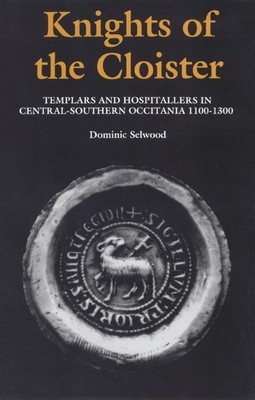
- We will send in 10–14 business days.
- Author: Dominic Selwood
- Publisher: Boydell Press
- ISBN-10: 0851158285
- ISBN-13: 9780851158280
- Format: 15.6 x 23.4 x 1.5 cm, minkšti viršeliai
- Language: English
- SAVE -10% with code: EXTRA
Reviews
Description
The Templars' and Hospitallers' daily business of recruitment, fund-raising, farming, shipping and communal life explored alongside their commitment to crusading.
The military and religious orders of the Knights Templar (founded 1120) and Knights Hospitaller (founded c.1099) were a driving force throughout the long history of the crusades. This study examines the work of the two orders closely, using original charters to analyse their activities in their administrative heartland in south-west France, and sets them in the context of contemporary religious life and economic organisation. Recruitment, fund-raising, farming, shipping, and communal life are all touched upon, and the orders' commitment to crusading through control and supply of manpower, money, arms and supplies is assessed. Dr Selwood shows the orders at the centre of religious life in Occitania, highlighting their success compared with other new orders such as the Cistercians, and looking at their relationships with the secular and monastic Church. Other themes addressed include the orders' relationshipto Occitanian society and to the laiety, their involvement with pilgrimage to Jerusalem, their innovative administrative structures, and their logistical operations.DOMINIC SELWOOD gained his Ph.D. at Oxford; he is now a barrister at Lincoln's Inn, and practices from chambers in the Inner Temple.
EXTRA 10 % discount with code: EXTRA
The promotion ends in 21d.13:30:14
The discount code is valid when purchasing from 10 €. Discounts do not stack.
- Author: Dominic Selwood
- Publisher: Boydell Press
- ISBN-10: 0851158285
- ISBN-13: 9780851158280
- Format: 15.6 x 23.4 x 1.5 cm, minkšti viršeliai
- Language: English English
The Templars' and Hospitallers' daily business of recruitment, fund-raising, farming, shipping and communal life explored alongside their commitment to crusading.
The military and religious orders of the Knights Templar (founded 1120) and Knights Hospitaller (founded c.1099) were a driving force throughout the long history of the crusades. This study examines the work of the two orders closely, using original charters to analyse their activities in their administrative heartland in south-west France, and sets them in the context of contemporary religious life and economic organisation. Recruitment, fund-raising, farming, shipping, and communal life are all touched upon, and the orders' commitment to crusading through control and supply of manpower, money, arms and supplies is assessed. Dr Selwood shows the orders at the centre of religious life in Occitania, highlighting their success compared with other new orders such as the Cistercians, and looking at their relationships with the secular and monastic Church. Other themes addressed include the orders' relationshipto Occitanian society and to the laiety, their involvement with pilgrimage to Jerusalem, their innovative administrative structures, and their logistical operations.DOMINIC SELWOOD gained his Ph.D. at Oxford; he is now a barrister at Lincoln's Inn, and practices from chambers in the Inner Temple.


Reviews